Results 1 to 7 of 7
Thread: Norton Queer Creek Oil Stone
-
09-26-2009, 06:14 PM #1
 Norton Queer Creek Oil Stone
Norton Queer Creek Oil Stone
I recently acquired my grandfather's hone from my uncle. On the side was a label that read 'Norton Abrasives' and 'Queer Creek Oil Stone'. It measures 6"x2"x1". A couple of questions: 1.) Does any one have any idea what grit the 'Queer Creek' was or was it like a model that could be different grits, depending on what you needed? It's pretty fine, almost like the reddish colored barber hones. 2.) Any idea when it may have been made? I read somewhere that they changed it from 'Queer Creek' to 'Clear Creek' around 1948-49. 3.) Although it's a oil stone would it hurt to use water on it? My uncle said he remembers as a kid watching grandpa spit on it to sharpen his razors. I don't think it has ever had oil on it except from the factory, if it has it's been many years ago. Any info would be greatly appreciated. Thanks guys!
-
09-26-2009, 07:21 PM #2

Thanks for this information! Beenpickin very generously sent me some hones, one of them a Queer Creek/Clear Creek/Ohio Blue Sandstone. Though it's much slower than man-made hones of comparable grit (600-1000) it can be used as a bevel setter.
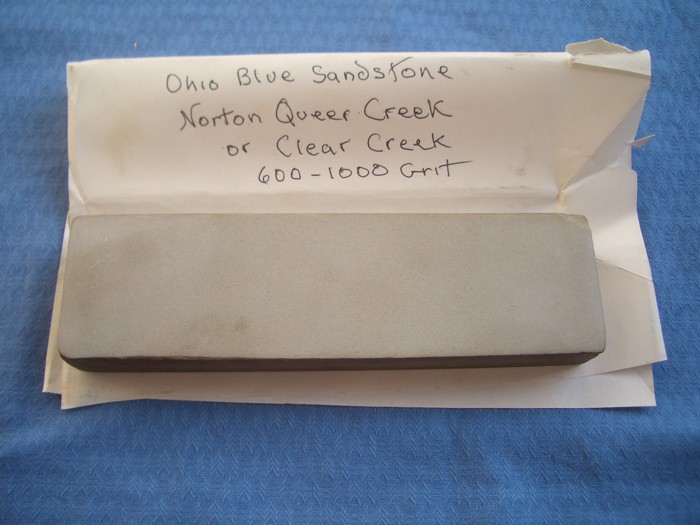
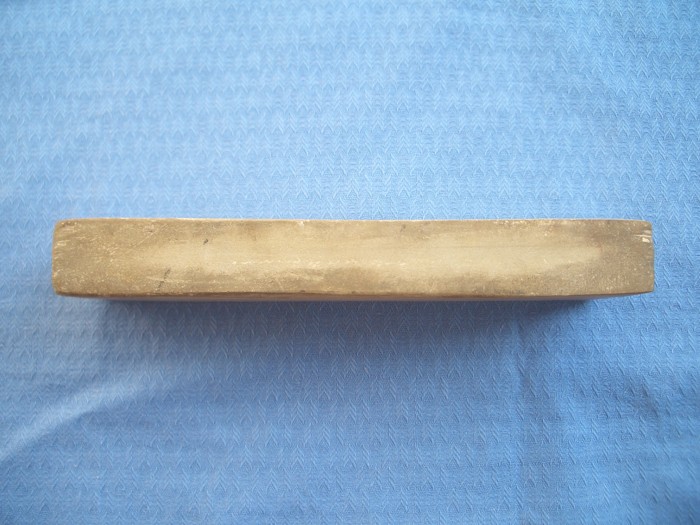
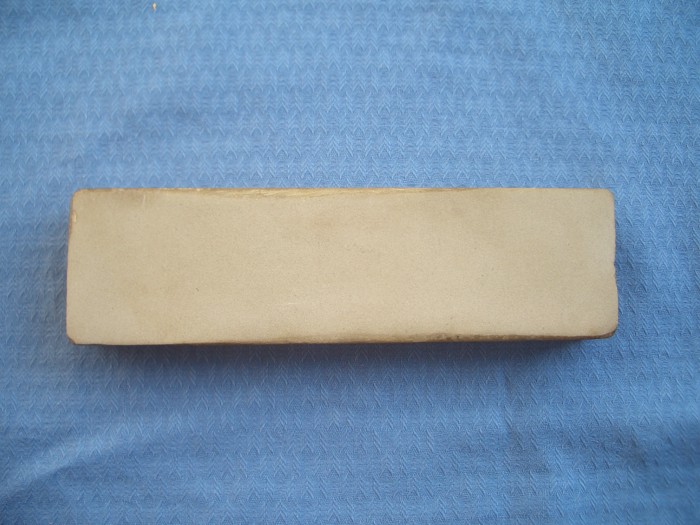
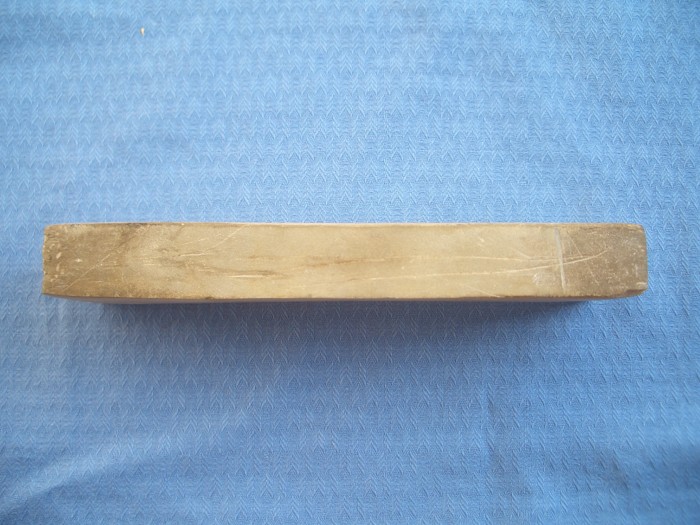
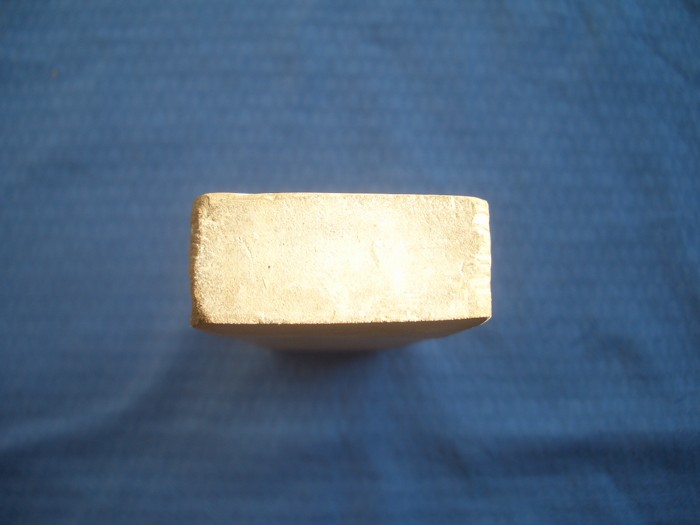
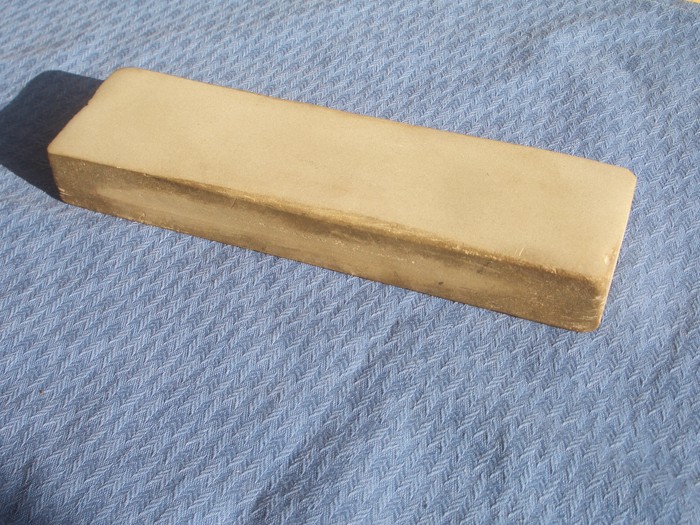
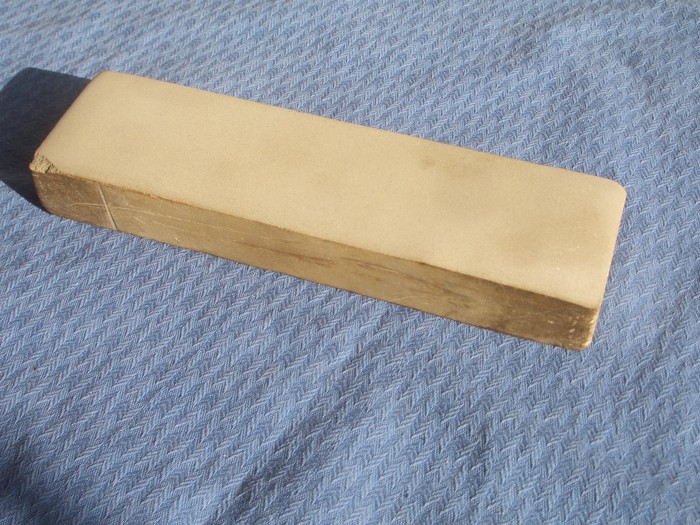
-
The Following 2 Users Say Thank You to Oldengaerde For This Useful Post:
DwarvenChef (09-28-2009), JimmyHAD (09-27-2009)
-
09-26-2009, 07:32 PM #3

The reference I have has the stone as coming from Ohio and describes it as a "hard, dark grey, medium coarse sandstone used as a waterstone for coarse sharpening." So I guess that means water should be okay. In the reference I have it also mentions two other stones from Ohio: the Deerlick stone which comes from Cuyahoga County and the Euclid which is described as, "blue, very fine grit, used mainly for sharpening butcher's and pocket knives." Seeing as Coticules are used by butchers and Tams are used for pocket knives, the Euclid may be of interest to us.
Regards,
Alex
-
09-27-2009, 02:59 PM #4

I have not found my Queer Creek stone to be much use for razors. I would characterize it as somewhere in the 700 to 1000 grit JIS range as stated earlier, but it is an extremely slow cutter without using pressure on the blade...in fact I would say a Ouchita Arkansas stone is about the same speed if not faster cutting than mine. I would also add that it has a weird feel to it once you get some slurry, it's like it's covered in tiny ball bearings...the grit doesn't seem to dig into the blade like most stones, it just rolls around with it. I have never tried mine with oil, I have always used water. I can't imagine it performing much differently with oil than water though.
As for it's origins, Norton mined those at the quarry on the Queer Creek near what eventually became the Hocking Hills State Park in Ohio.
It is certainly a natural, and I can't seem to turn down a natural even if I don't like it for razors....I can always use it as a medium coarse stone for other blades.
Here's a couple pics of mine, the top pic is dry and the bottom pic has a water resting on the top.
-
09-27-2009, 03:03 PM #5
-
10-18-2009, 04:53 AM #6
 Additional Info On Norton Queer Creek Oilstone
Additional Info On Norton Queer Creek Oilstone
When this was first posted I didn't know how to include pics. So, here are pics of the hone and additional info. On the label that was on the side read "Norton Abrasives, Behr-Manning, Troy, New York, (Division of Norton Co.), Original Pike Quality (with pic of a fish) and Queer Creek Oil Stone." It is a step or two more course that barber hones but I consider it a fairly fine grit.
Last edited by DoughBoy68; 10-18-2009 at 04:56 AM.
-
The Following User Says Thank You to DoughBoy68 For This Useful Post:
Oldengaerde (10-19-2009)
-
11-10-2009, 02:36 AM #7jdX

- Join Date
- Nov 2009
- Location
- Kansas City, MO
- Posts
- 38
Thanked: 2 Nothing special for razors
Nothing special for razors
I got one of those Queer Creek Norton stones about 3 years ago on Ebay. I've used mine a couple of times on old style stockman pocket knives. But like the one fellow mentioned I really wouldn't think that stone would be of much use for something as precise as a straight razor.
It did OK on a couple of pocket knives but I finished the knives on a Spyderco "fine" stone. No I don't think it's suitable for razors. But I do plan on keeping mine because it does seem to abrade carbon steel pocket knives very nicely. It's truly antiquated compared to all of the newer stuff on the markets today.


 2Likes
2Likes LinkBack URL
LinkBack URL About LinkBacks
About LinkBacks







 Reply With Quote
Reply With Quote
